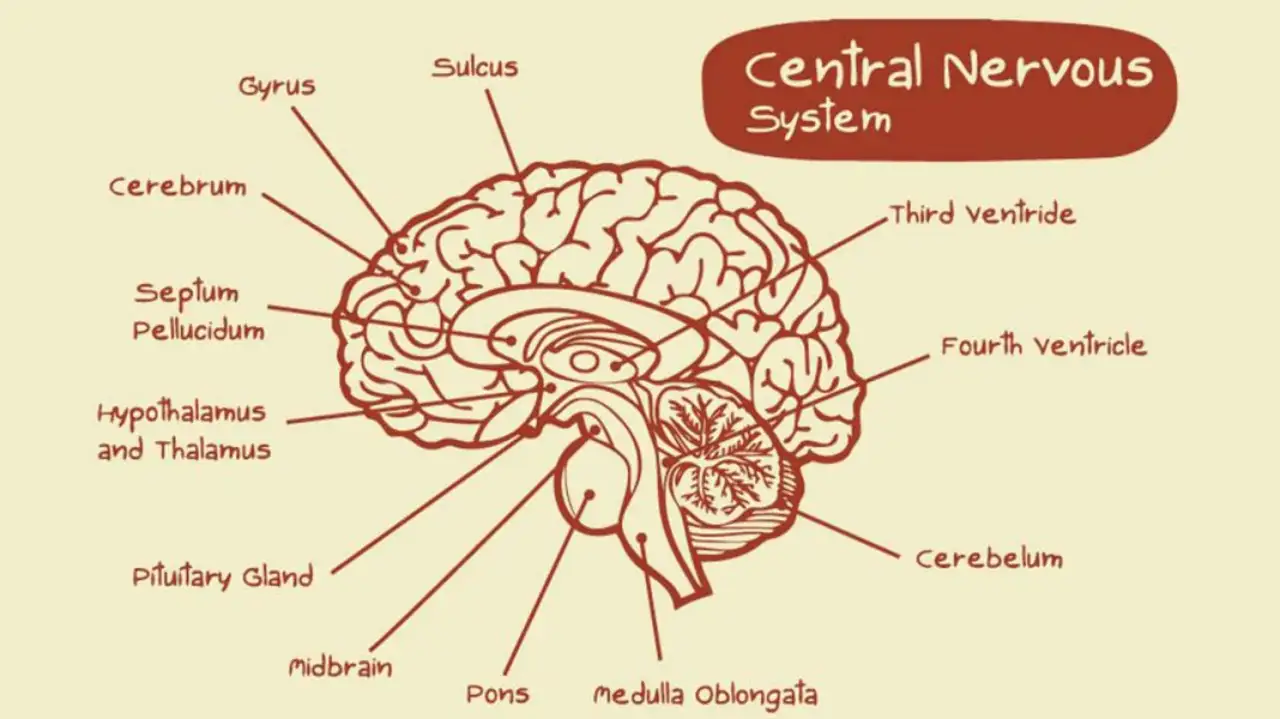NERVOUS SYSTEM ANATOMY
NERVOUS SYSTEM ANATOMY
In the human body, certain groups of organs or tissues possessing common function are called System. Thus, those tissues or organs that perform the work of digestion, are grouped under Digestive system, and they include such varying structures as teeth, stomach, liver, glands, etc. Of all the organs or systems, those relating to motion, sensations, consciousness, etc., are grouped under Nervous System.
The Nervous System comprises
- The sympathetic or Autonomic Nervous System.
- The Central or Cerebro-Spinal Nervous System.
The Sympathetic System supplies nerves to the viscera, glands and blood-vessels. It is connected with the Central nervous system, and consists of two trunks, situated one on each side of the vertebral column. Each trunk is made up of a longitudinal series of ganglio or gangliated cords, i.e.,
thickenings along the course of nerve-fibres, (b) strands of nerve fibres connecting the ganglia, and (c) plexuses or nerve-fibre networks.
The Central Nervous System comprises
- Cerebral or large Brain.
- Cerebellum or small Brain.
- Pons varolii; Medulla Oblongata
- Spinal cord.
- Nerve-trunks; Nerve fibers; Nerve endings.
The cerebrum or the Cerebral Hemispheres, one on each side, form the largest part of brain. They are joined to each other directly. Their surface is made up of what is called grey matter or cell collections and it presents convolutions separated by sulci. The interior is made up of white matter—i.e., of nerve-fibers.
The cerebellum also consists of two hemispheres, united by a median portion, the vermis.
The Pons Varolli: It lies central to the cerebellum.
The Medulla Oblongata: It is conical in shape, with the large end upwards and about one-inch long. In its lower half is a central canal continuous with that of base of fourth ventricle of brain and with the central canal of spinal cord.
The Spinal Cord: It is more or less cylindrical about a foot and a half long and nearly fills the bony spinal canal. From it emerge 3 pairs of nerves. Its outer part is made of gray matter, and the inner of white matter and in the centre runs the central canal.
The cerebrum, cerebellum, pons, medulla and spinal cord are all covered by three layers of membrane or Meninges. The most outer one is called Dura mater, which is continuous with the periosteum of bone. This is a sort of binder to the extremely delicate nervous tissues. The next, the middle coat or meninges is called the Arachnoid. It forms a loose investment to the brain and spinal cord and provides sheath for the emerging nerves for a short distance. The most internal of meninges is the Pia mater. It carries a network of blood vessels.
Nerves: A nerve or nerve trunk is a communicating cord or link between the brain and the peripheral parts of the body. The nerves are divided as follows
- Cranial nerves, i.e., nerves originating from under surface of cerebrum. These occur in 12 pairs one on each side.
- Spinal nerves, i.e., 31 pairs of nerves arising from either side of the spinal cord.
The cranial nerves are described below in detail
- Olfactory—These are concerned with the sense of smell.
- Optic—These pierce the globe of the eye from behind and spread out on its inner surface as retina.
- Oculo-motor—They move the muscles of the eyeball.
- Trochlear—Such nerves move the orbit of the eye- upwards.
- Trigeminal—Their sensory fibers supply face, front of head, nose, mouth, front two-thirds of tongue and teeth; their motor fibers are concerned with the act of chewing or masticating.
- Abducens—They turn eye outward.
- Facial—These are motor nerves to muscles of scalp and face; sensory to the tongue.
- Auditory or Acoustic—They are concerned with hearing, maintenance of equilibrium of body and localization of one’s position.
- Gloso-pharyngeal—They are sensory to tongue and pharynx; and motor to pharynx.
- Pneumonia-gastric or Vagus—These are motor to pharynx, larynx, esophagus, trachea, lungs, diaphragm; and sensory to external ear, larynx and lungs.
- Spinal Accessory—They are motor to certain muscles.
- Hypo-glossal—These are motor to tongue.
The spinal nerves are in 31 pairs. They arise from the spinal cord by two roots—anterior or motor; and posterior or sensory—having a ganglion (or thickening). The anterior and posterior roots unite immediately lateral to the ganglion, to form the spinal nerve trunk. The spinal nerves
- 8 Cervical pairs (whence the brachial plexus).
- 12 Dorsal or thoracic pairs.
- 5 Lumbar pairs (whence lumbar plexus)
- 5 Sacral
- 1 Coccygeal
Each nerve trunk, arising from the cord or from the union of one or more trunks called Plexuses, divides and subdivides, receiving local name. Nerves finally terminate into muscle-cells or glands or as specialized endings called touch corpuscles (in skin) or taste-buds (in tongue).

Comments are closed.